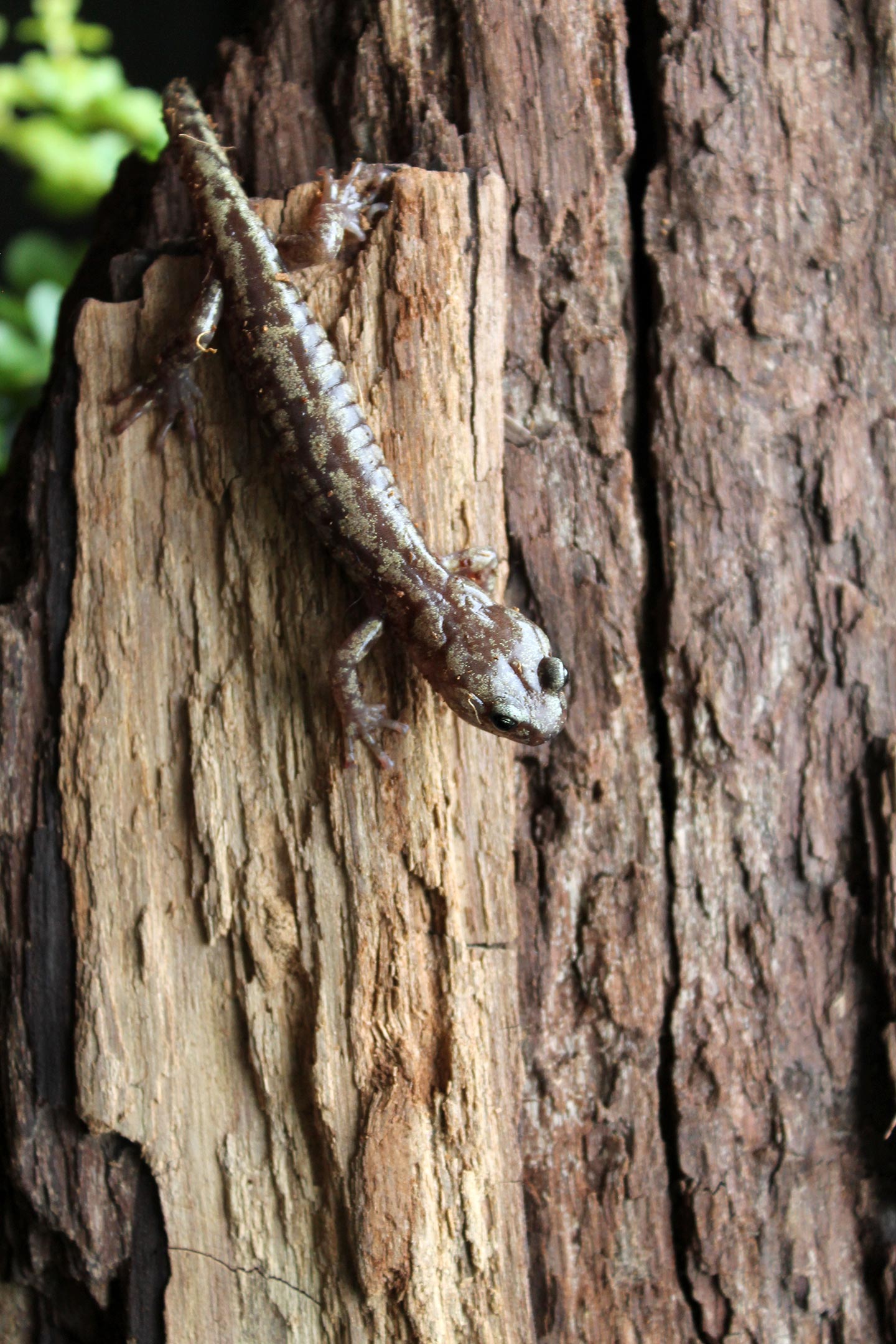

The wandering salamander, Aneides vagrans, is about 4 inches long and lives its entire life in the crowns of redwood trees more than 150 feet above the ground. Researchers discovered that it has adapted to its high-rise lifestyle by developing the ability to parachute and glide when falling. Credit: Christian Brown
“Wandering salamanders” live in some of the tallest trees in the world. They also are known to jump when disturbed. Now, scientists report in the journal Current Biology on May 23, 2022, that these salamanders rely on postures much like those of skydiving humans to help slow and control their fall.

High-speed video of an arboreal salamander in a vertical wind tunnel. Credit: Christian Brown
“Although hundreds of species of lungless salamanders are known to climb, aerial behavior had not been described,” said Christian Brown, a doctoral candidate at the University of South Florida and lead author on the study. “Our investigation of aerial behavior revealed that highly arboreal species of salamanders, especially the wandering salamander (Aneides vagrans), reliably engage in parachuting and gliding to slow and direct their descent.”
After first reading about the wandering salamander in a National Geographic magazine in high school, Brown says that he never stopped thinking about them. Years later, while working with wandering salamanders at Humboldt State University (now CalPoly Humboldt), he saw that the amphibians would readily jump from his hand or a redwood branch before quickly and consistently assuming skydiving postures. He wanted to find out whether and how this unexpected aerial behavior came into play in nature.
Aneides vagrans parachuting in a vertical wind tunnel at an airspeed approximately corresponding to the animal’s terminal velocity. Credit: Christian Brown
In the new study, he and colleagues including Erik Sathe, Robert Dudley, and Stephen Deban describe the salamanders’ aerial performance in which they maintain stable gliding postures by adjusting their legs and tail. In wind-tunnel experiments, the salamanders parachuted consistently, slowing their vertical speed by up to 10% while falling. They also coupled parachuting with undulations of their tail and torso to effect gliding at non-vertical angles about half of the time.
“To observe salamanders, which are generally associated with ponds and streams, in the air is a bit unexpected in and of itself,” Brown said. “Most surprising to us was the exquisite level of control that the more arboreal salamanders had in the vertical wind tunnel. Wandering salamanders were especially adept and seemed to instinctively deploy skydiving postures upon first contact with the airstream.

A. vagrans jumping. Credit: Christian Brown
“These salamanders were not only able to slow themselves down, but also used fine-scale control in pitch, roll, and yaw to maintain upright body postures, execute banking turns, and glide horizontally. This level of aerial control was unexpected because these salamanders do not seem to possess conspicuous features for aerial control.”
Brown said what he finds most noteworthy is that the salamanders, and presumably other animals, don’t necessarily need flashy control surfaces such as webbing or skin flaps to parachute and glide. He wonders what other animals might have hidden skydiving abilities. Brown also hopes that the findings will help attract attention to this unique species and its old-growth, canopy world.
High-speed video reveals a big difference in how salamanders react to falling. While ground-dwelling (nonarboreal) salamanders seem helpless during freefall in a vertical wind tunnel, arboreal salamanders maneuver confidently. This suggests that the tree-dwellers have adapted to routine falls, and perhaps use falling as a way to quickly move around in the canopies of the world’s tallest trees. The white spots are paper disks attached wit
“Scientists have barely scratched the surface in studying the redwood canopy ecosystem and the unique fauna it has shaped through evolutionary time,” he says. “With the climate changing at an unprecedented rate, it is vitally important that we collect more data on animals like wandering salamanders so we may better understand, protect, and preserve this delicate ecosystem.”
In the meantime, he’s using computational fluid dynamics and 3D reconstruction software to determine how the salamanders generate lift. He says that future research should include salamanders with more diverse morphologies and examine the sensory cues that lead to their aerial behaviors.
For more on this research, see Skydiving Salamanders Parachute and Glide From the Tallest Trees.
Reference: “Gliding and parachuting by arboreal salamanders” by Christian E. Brown, Erik A. Sathe, Robert Dudley and Stephen M. Deban, 23 May 2022, Current Biology.
DOI: 10.1016/j.cub.2022.04.033

